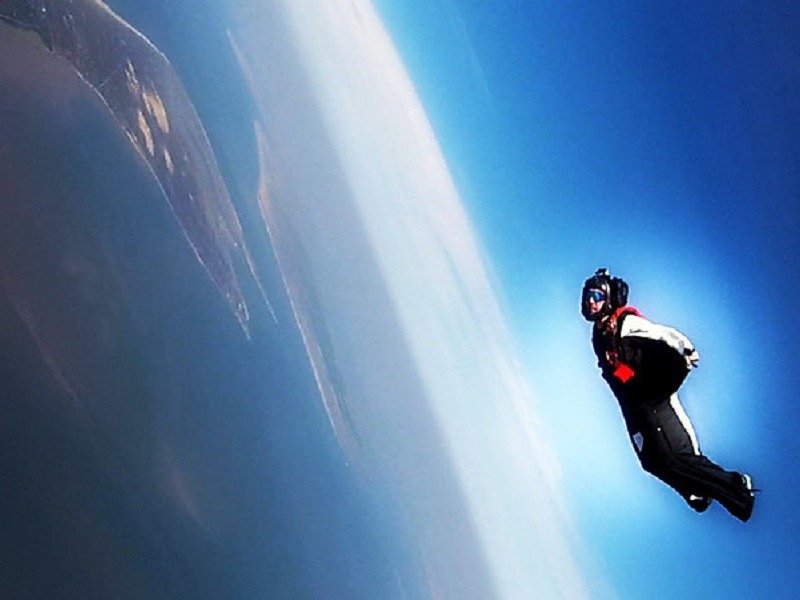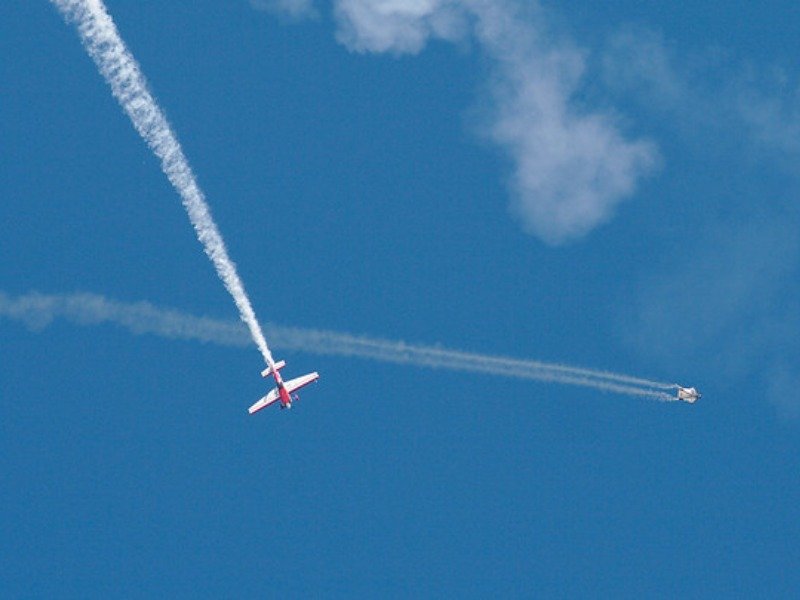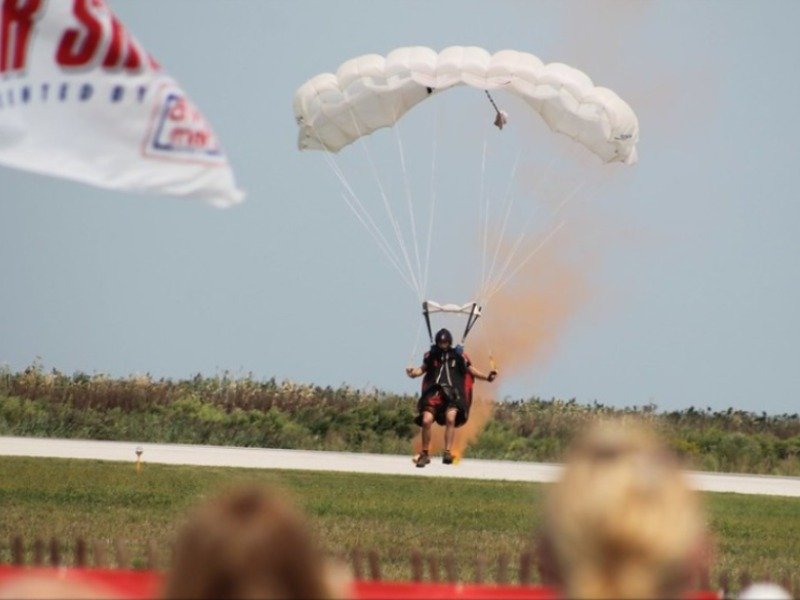Wingsuit flying, also known as wingsuiting, is the sport of flying through the air aided by nothing but your nylon wingsuit. Sometimes called birdman suits, or squirrel suits, wingsuits have strong fabric between the legs and under the arms. This gives jumpers a greater surface area enabling lift and controlled flying. As you can imagine, wingsuit flying can be fun, but also very dangerous.
There are two major types of wingsuit flying. Wingsuiting from a plane starts similarly to standard skydiving, whereas wingsuit base jumping starts from a fixed object such as a mountain or tall building.
Both types of wingsuit flying are considered to be dangerous sports, but just how dangerous is wingsuit flying? How does wingsuiting from a plane compare to wingsuit base jumping or skydiving? And is it becoming safer over time?
Is wingsuit flying more dangerous than skydiving?
In order to attempt wingsuit flying, you must first become an accomplished skydiver. However, despite the level of expertise and experience a wingsuiter will have, it’s still extremely dangerous.
The death rate for skydiving as a whole is around 1 per 100,000 jumps. This figure is somewhat skewed by a high number of competition and performance deaths; performance skydiving has a much higher death and injury rate due to increased risk-taking. Statistically, you are still more likely to die driving 1,000 miles in a car, than taking a professionally run skydive.
Wingsuit flying is a very different story. Despite the level of skill a wingsuiter has, the death rate is still estimated to be as low as 1 in 500. This makes it up to 200 times more dangerous than skydiving. With that said, the vast majority of wingsuit attempts and deaths are from wingsuit base jumping.
Most professionals will acknowledge that wingsuit flying from a plane is notably more dangerous than skydiving. But it’s also believed that wingsuit flying from a plane is more in line with the dangers of skydiving, rather than the much higher risks involved in wingsuit base jumping.
Is wingsuit skydiving more dangerous than wingsuit base jumping?

It’s hard to find extensive stats on wingsuit deaths and accidents. While most wingsuit deaths and serious accidents are recorded, there are no reliable records on the total number of wingsuit flights.
Despite the lack of reliable statistics, it’s clear that wingsuit skydiving is significantly safer than wingsuit base jumping. This is due to the adding dangers base jumping brings.
Base jumping involves jumping from a grounded object, and usually much close to ground level than a jump from a plane. Not only must you navigate dangerous objects as soon as you jump but there is also far less time to react if things go wrong.
Has anyone died using a wingsuit?
Tragically, wingsuit deaths have been around since the beginning of the sport. Modern wingsuit flying is considered to have started in 1981. From 1981 to 2012 there were 200 registered base jump deaths, 50 of those involving a wingsuit. Wingsuit deaths in the European Alps have become so common that July to September is now known as the ‘killing season’.
Since 2012, the number of wingsuit deaths continued to grow year on year, with 2016 considered to be the deadliest for wingsuit flying; in 2016 there were 31 wingsuit base jump deaths. A number of high-profile wingsuit base jumpers passed away in 2015-2016: Jhonathan Florez, Dean Potter, Uli Emanuele, Dario Zanon, and Alexander Polli.
The most talked about was that of Italian base jumper Armin Schmieder. Armin was broadcasting his wingsuit base jump live on Facebook when he tragically died.
Is the death rate for wingsuit flying still high?

As a result of the high death rate in 2016, some regions began to take action. A number of popular base jump locations started placing periodic bans to lessen the dangers. One such place is Chamonix in the French Alps. The mayor of Chamonix has announced a number of seasonal bans on wingsuit flying to try to counter the high number of injuries and deaths it has seen.
The number of wingsuit deaths has dropped since 2016. There were only 15 deaths recorded in 2017, and 23 in 2018. In the last 2 years figures have continued to stay well below the concerning figures of 2016.
One of the most high-profile wingsuit deaths with that of Mark Sutton in August of 2013. Mark gained fame for his wingsuit acrobatics after being the star of the 2012 Olympic opening ceremony. But a year on from his icon performance, he died in a wingsuit accident. He was wingsuit flying through the Mont Blanc massif, at speeds of around 125 MPH when he tragically crashed and died.
What are the odds of dying in a wingsuit?
With so few official stats it’s hard to calculate any reliable figures or odds on how dangerous wingsuiting is. But while there is no precise death or injury rate, you can get a good idea of the mortality figures by checking the fatality lists here and here.
In 2012, Dr. Omer Mei-Dan carried out a study into the dangers of wingsuit flying. Dr. Mei-Dan was a base jumper and sports medicine specialist, who also wrote the textbook “Adventure and Extreme Sports Injuries.”
He concluded that as many as 72% of wingsuit flyers have seen or been around a wingsuit death or serious accident. He also noted that 43% had experienced a significant injury while wingsuit flying. Equally worrying, he concluded that 76% of wingsuit pilots he had spoken to had already narrowly missed death or serious injury.
Has wingsuit flying become safer?

As to whether wingsuit flying has become safer, the jury is still out. What makes base jumping such a popular extreme sport is the danger. Soaring as close as possible to objects and gaining insane speeds is what it’s all about.
Improvements in wingsuit tech and equipment have meant pilots can inflate their wingsuits much quicker, turn much sharper, and exit faster. However, many argue that the many wingsuit companies are allowing people to take the sport with less and less experience. The sport still lacks the organization and regulations of skydiving.
How can you be safer when wingsuit flying?
The United States Parachute Association states that its members must have a minimum of 200 completed skydives and a minimum of 18 months of experience, in order to try wingsuit flying. This is the bare minimum, and most countries and international organizations recommend similar levels of experience, emphasizing how long it takes to learn wingsuit flying.
First-time wingsuiters should complete an introduction course before attempting their first flight. Regardless of your skydiving experience, there are many new skills and techniques you’ll need to master before getting suited up and taking your first jump.
It’s also important to start simple and with the correct equipment. There are different levels of wingsuit routes and even different types of wingsuits. More advanced wingsuits have extra fabric which enables longer and faster flights. These suits can catch air pockets and send a pilot into a spin. They should be strictly avoided by inexperienced wingsuiters.

